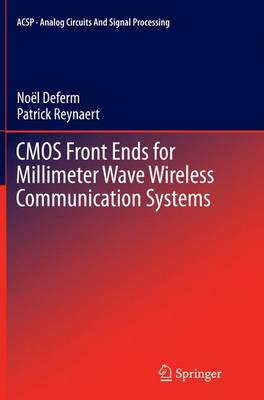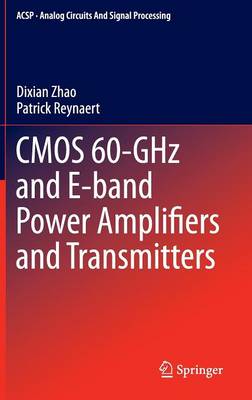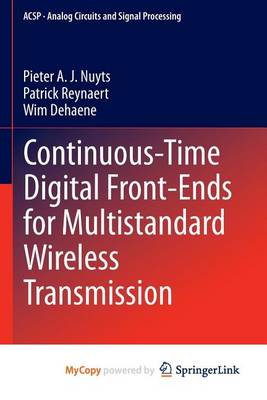Analog Circuits and Signal Processing
4 total works
CMOS Front Ends for Millimeter Wave Wireless Communication Systems
by Noel Deferm and Patrick Reynaert
This book focuses on the development of circuit and system design techniques for millimeter wave wireless communication systems above 90GHz and fabricated in nanometer scale CMOS technologies. The authors demonstrate a hands-on methodology that was applied to design six different chips, in order to overcome a variety of design challenges. Behavior of both actives and passives, and how to design them to achieve high performance is discussed in detail. This book serves as a valuable reference for millimeter wave designers, working at both the transistor level and system level.
CMOS 60-GHz and E-band Power Amplifiers and Transmitters
by Dixian Zhao and Patrick Reynaert
This book focuses on the development of design techniques and methodologies for 60-GHz and E-band power amplifiers and transmitters at device, circuit and layout levels. The authors show the recent development of millimeter-wave design techniques, especially of power amplifiers and transmitters, and presents novel design concepts, such as "power transistor layout" and "4-way parallel-series power combiner", that can enhance the output power and efficiency of power amplifiers in a compact silicon area. Five state-of-the-art 60-GHz and E-band designs with measured results are demonstrated to prove the effectiveness of the design concepts and hands-on methodologies presented. This book serves as a valuable reference for circuit designers to develop millimeter-wave building blocks for future 5G applications.
Continuous-Time Digital Front-Ends for Multistandard Wireless Transmission
by Pieter a J Nuyts, Patrick Reynaert, and Wim Dehaene
RF Power Amplifiers for Mobile Communications
by Patrick Reynaert and Michiel Steyaert
This book tackles both high efficiency and high linearity power amplifier (PA) design in low-voltage CMOS. With its emphasis on theory, design and implementation, the book offers a guide for those actively involved in the design of fully integrated CMOS wireless transceivers. Offering mathematical background, as well as intuitive insight, the book is essential reading for RF design engineers and researchers and is also suitable as a text book.



